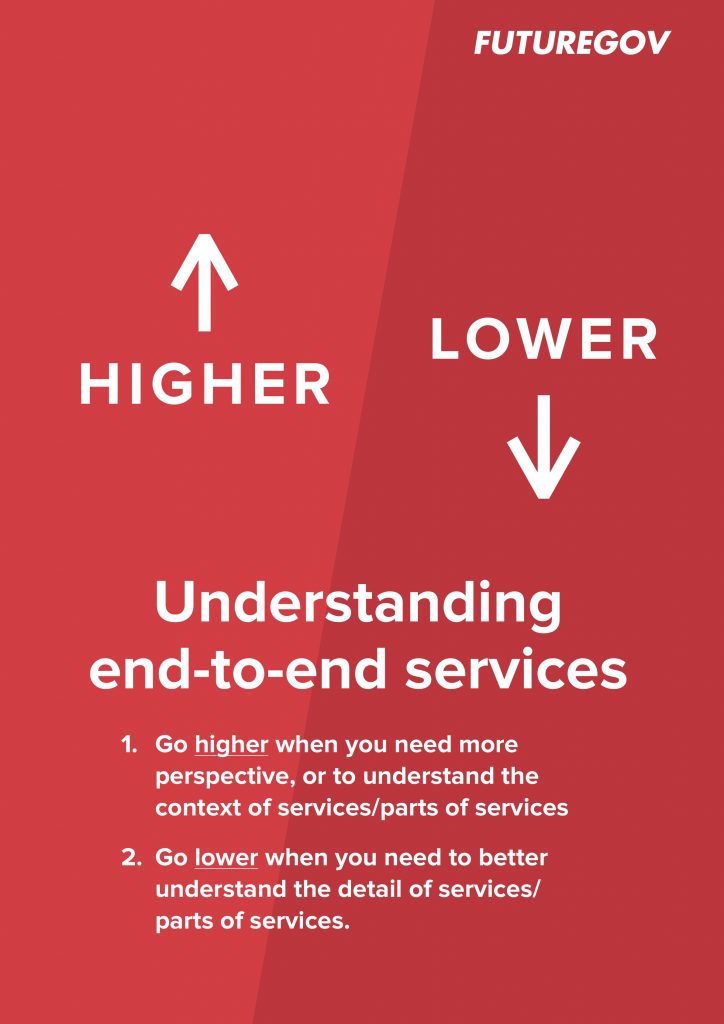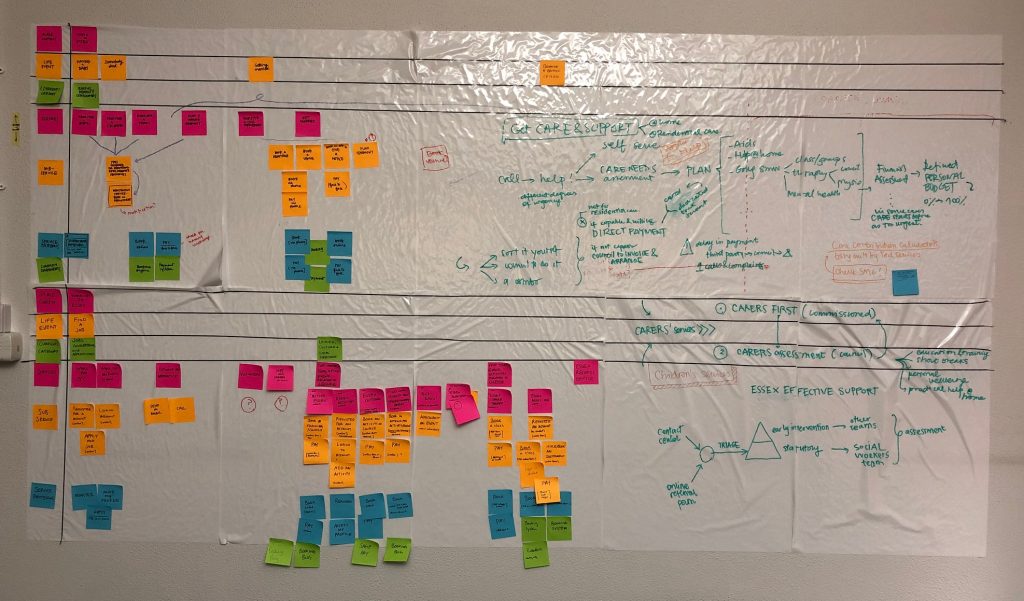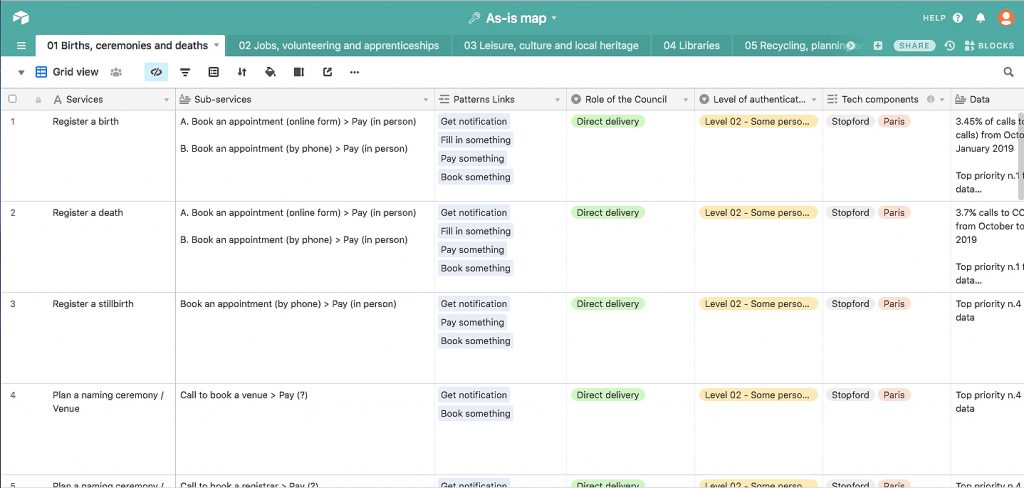We recently posted about common service patterns and why they matter.
Since then we’ve been busy mapping services across the organisation to understand how common patterns might support the development of better, faster, cheaper online services for Essex residents. We’re also really interested in how the use of common patterns might change the wider conversation around how services are designed and delivered in Essex.
Over the past 5 weeks we have mapped 157 transactional services across the council, spanning from ‘book an appointment to register a birth’ to ‘reporting a pothole’.
This blog post talks about our approach. We haven’t got all the answers yet and it’s still the beginning of a long journey, but we’re already discovering some really interesting things.
Considering context – a new type of map
We started by looking at the way information is structured - and therefore services offered to residents, on the new essex.gov.uk website. Keeping the focus on transactional, resident-facing services has given us the right balance of depth and breadth, as we need to understand the details and the bigger picture. This combination has been ideal for this stage of mapping.
We thought about the information that we’d need to capture, and how we could frame our work to create a new, more useful view of ECC’s services. Building on previous thinking around ‘service-orientated’ approaches, we set out to capture information at a number of different levels.
Place context
How services exist in the context of Essex as a place. This is a way to link them to the Essex place-based strategy and to help with understanding place and local strategy context.
Life event
The life context of each service related to which specific moment of their lives residents are likely to use a service. Life events are useful for challenging the way services are currently offered, and for thinking about the role of the council.
Function
Which service area is currently responsible to offer that specific service within ECC/Essex.gov.uk.
Services
The service as residents would know it. This is at the heart of the map. A typical service is an end-to-end one, that allows residents to complete a specific task.
Sub-services
The steps and types of interactions in a service that residents typically need to go through. Mapping these is key to finding patterns.
Service patterns
Recurring steps and types of interactions that get repeated throughout different services. We started by using a provisional list of patterns based on team assumptions and previous experience on projects.
Common technology components
The technology platforms and systems that enable services. It was important to map these to surface inconsistency between patterns and enabling tech components to support future technology decisions.
We designed this poster to keep us on track in the early days, when the structure of the map was still a work in progress and it was easy for us to get lost in the detail or too high level.

Mapping and capturing the right level of detail
Most of our initial mapping focused on the ‘Services’ level and the levels below. We captured how services currently operate, the common things that happen and technologies that enable us to run these services today. We also added some more information, such as the role of the council (from direct delivery to signposting), the level of authentication needed to access the service, related data on the number of calls and transactions and the main pain-points for users and service teams.
And whilst it wasn’t our main focus in this phase, we also started to consider the life events and place context that these services operate within. We’re excited about how these more contextual elements might help us to change the conversation and think differently about the design of services in the future, and this will be the subject of another blog post in the next few days.
How not to get lost
We then spent some time thinking about how we would document our work. We initially focused on how best to visualise things, but we soon realised that we needed something that would help us to organise our information and better understand the relationships between different services.

As the ultimate goal of this project was to map many services to identify common patterns, we needed a tool that could make this information accessible but smart enough to help process it as well. In the end we opted for Airtable which has enabled us to create a relational database, where information is stored and filtered easily depending what we are focusing on that moment (patterns, life events, tech components).

What we have achieved so far
So, after deciding on our approach and tools we got busy with the mapping. Over the past 5 weeks we have mapped 157 transactional services across the council, spanning from ‘book an appointment to register a birth’ to ‘reporting a pothole’.
This has given us a really interesting as-is picture of ECC’s transactional services and the common patterns that sit beneath them, and we’re really happy to have covered so many services in such a short period of time.
What’s next
In the next few days we’ll publish more detail about the patterns that we’ve identified, which one we want to focus on for now and what we’ll be doing next. In the meantime, if you work at ECC and want to see a paper version of our map you can visit the Service Design area, we just moved to E1 Zone 3 in County Hall. For anyone else that’s interested or wants to feedback on this work, you can contact the team directly on service.design@essex.gov.uk
1 comment
Comment by Alexis Benavides Mariño posted on
This is very very helpful. I'm very gratefull for you work! Greetings from México!